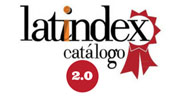Influencia de los parámetros de corte en el desgaste del flanco de insertos recubiertos durante el torneado del acero AISI 316L
DOI:
https://doi.org/10.29019/enfoqueute.v6n1.51Palabras clave:
Torneado de alta velocidad, Desgaste de flanco, Acero inoxidable AISI 316LResumen
(Recibido: 2015/01/20 - Aceptado: 2015/03/25)
La mejora continua de los procesos de fabricación es fundamental para alcanzar niveles óptimos de productividad, calidad y corte en la producción de componentes y productos. Esta investigación tiene como objetivo determinar la progresión del desgaste del flanco de la herramienta de corte durante el torneado en seco de alta velocidad para piezas de acero AISI 316L. Los datos experimentales fueron adquiridos utilizando dos niveles de avance de corte, dos niveles de material, tres de velocidad de corte y cuatro de tiempos principales de corte. Un microscópio electrónico de barrido (SEM) fue utilizado para medir y analizar el desgaste de las herramientas de corte. Los resultados fueron comparados utilizando el análisis de varianza y el análisis de regresión múltiple para describir la relación entre las variables utilizadas en el estudio. En el análisis se demostró que el inserto de tres capas no sobrepasó el criterio de fin de vida del desgaste, mientras que el inserto de una capa sufrió un desgaste elevado para la mayor velocidad de corte. Se encontró que existe una relación entre los datos experimentales y los valores predichos para el desgaste del flanco con un error promedio general de 4,1182 %.
Descargas
Publicado
Número
Sección
Licencia
Los autores retienen todos sus derechos (© copyright).
- Los autores retienen sus derechos de marca y patente, y también sobre cualquier proceso o procedimiento descrito en el artículo.
- Los autores retienen el derecho de compartir, copiar, distribuir, ejecutar y comunicar públicamente el artículo publicado en Enfoque UTE (por ejemplo, colocarlo en un repositorio institucional o publicarlo en un libro), siempre que se dé el reconocimiento de su publicación inicial en la revista Enfoque UTE.
- Los autores retienen el derecho a hacer una posterior publicación de su trabajo, de utilizar el artículo o cualquier parte de aquel (por ejemplo: una compilación de sus trabajos, notas para conferencias, tesis, o para un libro), siempre que indiquen la fuente de publicación (autores del trabajo, revista, volumen, número y fecha).
























